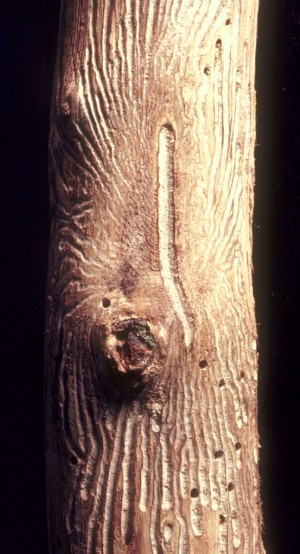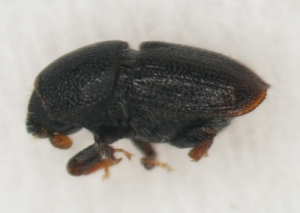Shothole Borer
 Scientific Name
Scientific Name
Scolytus rugulosus
Hosts
Common hosts include cherry, peach, plum, apple, and pear. They also breed in wild hosts such as wild plum, black cherry, and mountain ash.
Symptoms

Life Cycle
Shothole borers overwinter as larvae in their feeding tunnels under the bark of host trees. They pupate in the spring and adults emerge in April or May. After mating, the female beetle bores through the bark and constructs an egg gallery parallel with the grain of the wood between the bark and cambium layer. The larvae feed for about one month in tunnels under the bark. After pupating and transforming to adults they chew small round holes through the bark and emerge. These small holes are the source of the common name. Soon after emergence the beetles begin to deposit eggs for another generation. There are probably three or four generations per year in Oklahoma.
Description
The adult is a dark brown to black beetle about 1/10 inch long. The larvae are white, legless grubs with brown heads and are also about 1/10 inch long when mature.
Control
Please contact your local county extension office for current information.

